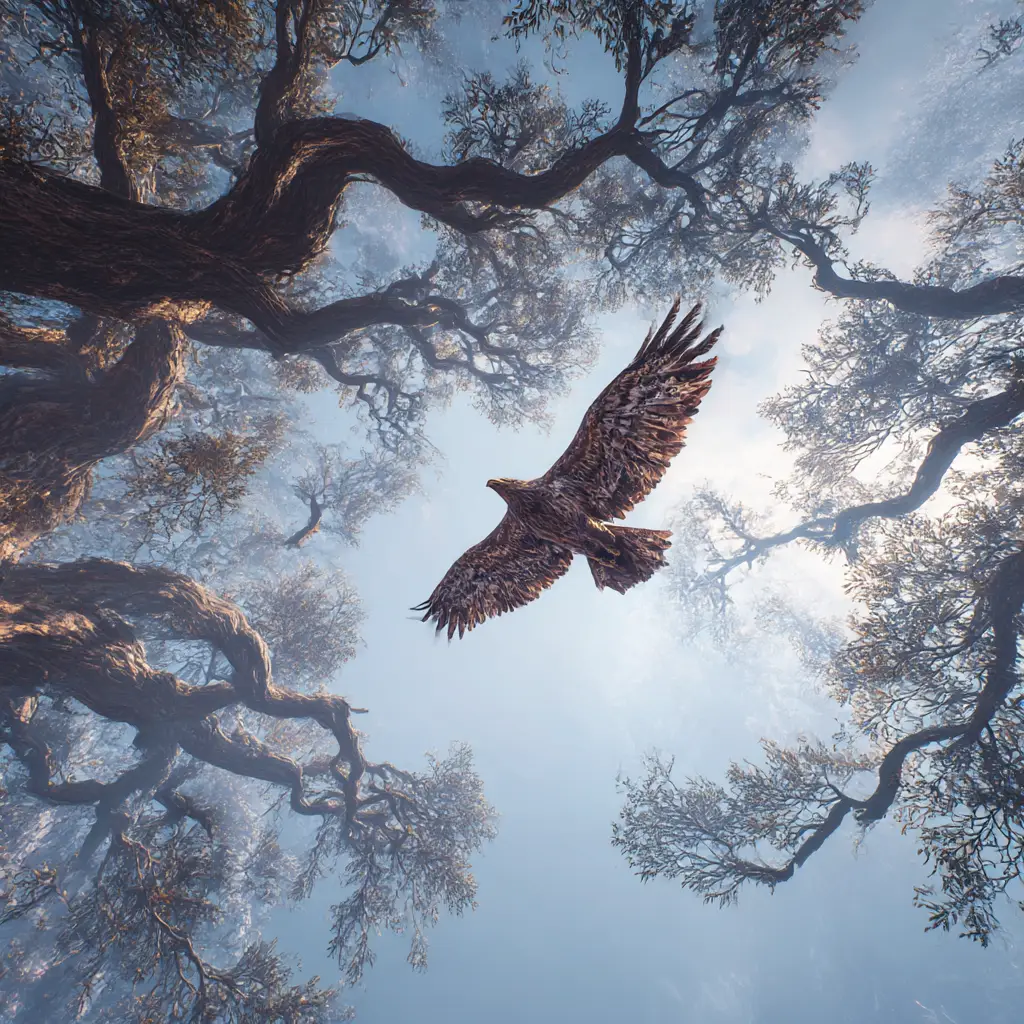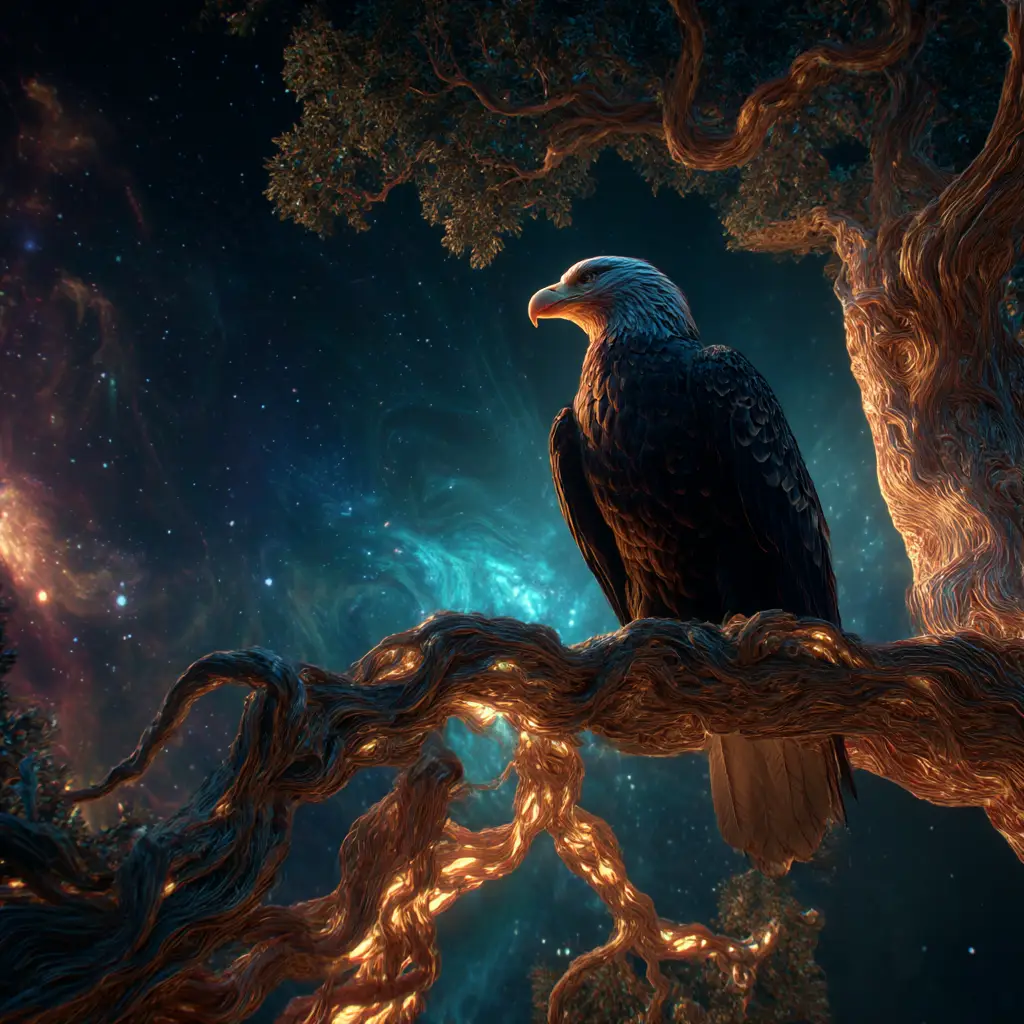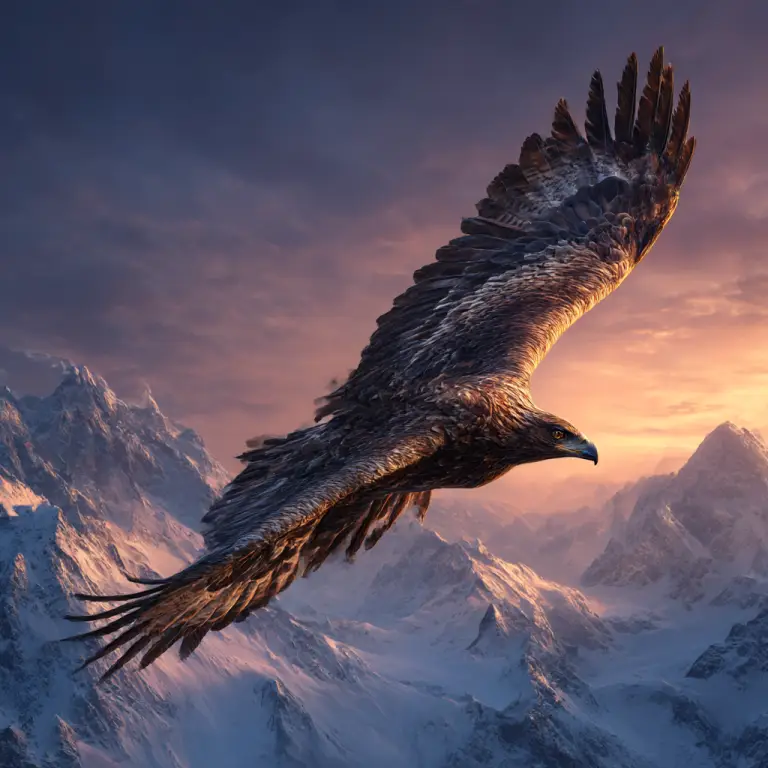Discover the role of eagles in Norse mythology. Learn about the mighty eagle atop Yggdrasil, its link to wisdom and battle, and its symbolic meaning in Viking belief.
Eagles in Norse Mythology
Eagles hold a powerful and mysterious place in Norse mythology. They symbolise wisdom, vision, and strength, standing between the realms of gods and mortals. The most renowned eagle sits high atop Yggdrasil, the World Tree, from where it watches over all nine realms.
The Eagle Atop Yggdrasil
At the very top of Yggdrasil, the immense ash tree that binds all the worlds together, dwells a mighty eagle. Though unnamed in surviving texts, this creature is described in the Prose Edda by Snorri Sturluson as a being of great wisdom and perception. Between its eyes perches a hawk called Vedrfolnir, acting as its messenger and companion.
From this highest vantage point, the eagle sees everything across the nine realms – Asgard, Midgard, and beyond. Its presence represents divine insight and awareness that transcends the limits of mortal understanding.
The Eagle and Nidhogg
Far below the eagle, among the roots of Yggdrasil, lives Nidhogg, a monstrous dragon or serpent that gnaws endlessly at the tree’s foundations. A squirrel named Ratatoskr scurries up and down the trunk, carrying insults between the eagle above and Nidhogg below.
This myth captures the eternal tension between light and darkness, sky and underworld, knowledge and destruction. The eagle symbolises wisdom, clarity, and the heavens, while Nidhogg embodies chaos, corruption, and decay.
Symbolism of the Eagle
To the Norse people, the eagle stood for courage, power, and the pursuit of higher knowledge. Its sharp eyes and commanding flight made it a natural emblem of vision and divine perspective. In poetry and legend, it represents both the watchful presence of the gods and the soul’s striving toward enlightenment.
Eagles also served as symbols of victory and honour. In Viking battle poetry, “feeding the eagle” meant triumphing in combat – as eagles and ravens were thought to feast on the fallen warriors after a fight. This link connects the bird with Odin, god of war, wisdom, and death.
Eagles and Transformation
Eagles appear in several myths involving transformation. One striking example is the story of the giant Thiazi, who takes the form of an eagle to seize the goddess Idunn and her golden apples of youth. This tale shows the eagle as a symbol of both freedom and danger, representing immense strength and cunning that can serve good or ill.
The Legacy of the Eagle in Norse Belief
Eagles feature throughout Viking art, carvings, and sagas. They are seen as watchers of fate, companions of gods, and heralds of war. The eagle’s association with Yggdrasil places it close to the cosmic order itself, a guardian of wisdom and balance.
Through its many roles – from the silent observer atop the World Tree to the fearsome predator of battlefields – the eagle remains a potent symbol of power and divine perspective in Norse mythology.



